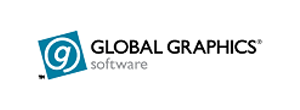
Ricoh has been working for some time now on a project with the German company Ollbrich, which manufactures gravure presses for the wallpaper market, in order to add an inkjet module. I’ve already covered this story but the key element is that Ricoh developed an oil-based ink for this project, which has led to this new ink for packaging.
Graham Kennedy, director of industrial Inkjet solutions for Ricoh Europe, explains: “We didn’t deliberately go after this market. We noticed it during the testing process with the wallpaper customer, that the ink was dry to the touch. So that gave us the thought that we could look for an application to eliminate the drying process and packaging was the obvious choice, so we started developing and testing it.”
However, where the wallpaper ink used mineral oil as its carrier, the plant-based oil ink uses soybean, which as Kennedy notes, should make it a very sustainable option. It’s only suitable for porous materials, such as corrugated, and not for flexible film. Kennedy explains: “The oil goes into the media and leaves the pigment on top.”
This means that there’s no need for heat or radiation energy to cure it, saving both money and the environmental cost of a drying unit. It also makes for a simpler press design as there’s no drying unit to manufacture.
Kennedy adds: “Oil doesn’t dry so the open time for the head is extremely high so this gives it a lot of advantage in terms of the system design.” Naturally, it’s fully optimised with Ricoh’s own printheads, and will work with smaller drop sizes down to 7pl.
The ink is not certified for any kind of food contact but Kennedy points out that all the materials are listed in Swiss ordinance, noting: “There’s no water so we don’t need to put biocides in the ink to keep fungus and bacteria. Because it’s a natural carrier there are no other problems and no need for initiators or monomers.”
Kennedy also says that the ink consumption is lower than an equivalent water-based ink, noting that users should be able to achieve the same optical density as a water-based ink with roughly 50 percent less ink.
He also says that it can be used with a pretreatment but that the rub resistance is good enough not to need an overcoat. The ink is available now, but only in CMYK. However, Kennedy notes that the primer is white, adding: “So you could use that as a base coat or undercoat.”
I don’t often come across oil-based ink though other vendors such as Kao Collins do offer this type of ink for packaging plus coding and marking applications. As a general rule, oil-based ink does have a reputation for low maintenance though you do have to ensure that the ink has fully dried so that the print speed will be related to the degree of coverage. Still, it’s interesting to see Ricoh working on this.
It’s also worth noting that Ricoh has developed a plant-based foamed PLA material, called PLAiR, that can be used for some packaging applications.
Naturally, Kennedy wouldn’t be drawn on pricing other than to say that the ink has to be competitive in the marketplace. Now, it’s highly likely that Ricoh has a very different understanding of ‘competitive pricing’ to anyone who actually has to pay for this ink, but even so the lower ink consumption and lack of energy used for drying should allow for a lot of leeway in pricing. You can find further details on Ricoh from Ricoh.com though there’ doesn’t appear to be any information on the plant-based ink.







